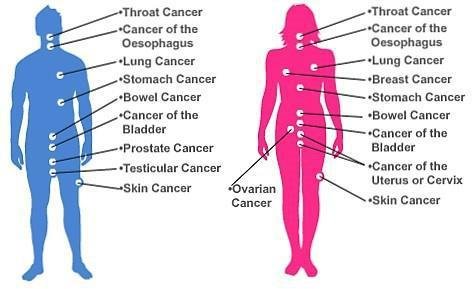Cancer is a complex and multifaceted group of diseases that can affect any part of the body. Understanding the different types of cancers is crucial for awareness, early detection, and effective treatment. In this comprehensive guide, we’ll delve into some of the most prevalent types of cancers, shedding light on their characteristics and risk factors.
1. Breast Cancer:
Location: Primarily in the breast tissue. Key Facts: One of the most common cancers among women. Regular screenings and self-examinations are crucial for early detection.
2. Lung Cancer:
Location: Develops in the lungs. Key Facts: Often associated with smoking, but non-smokers can also be affected. Symptoms may include persistent cough and difficulty breathing.
3. Colorectal Cancer:
Location: Affects the colon or rectum. Key Facts: Risk factors include age, family history, and certain lifestyle choices. Regular screenings are essential for prevention.
4. Prostate Cancer:
Location: Occurs in the prostate gland in men. Key Facts: Common in older men, with early stages often asymptomatic. Regular screenings are crucial for early detection.
5. Skin Cancer:
Location: Develops on the skin. Key Facts: The main types include melanoma, basal cell carcinoma, and squamous cell carcinoma. Sun protection is key for prevention.
6. Ovarian Cancer:
Location: Affects the ovaries in women. Key Facts: Often diagnosed at later stages due to vague symptoms. Regular check-ups and awareness are essential.
7. Leukemia:
Location: Affects blood and bone marrow. Key Facts: Characterized by the overproduction of abnormal white blood cells. Different types exist, requiring specific treatments.
8. Brain Tumors:
Location: Develops in the brain or spinal cord. Key Facts: Symptoms vary based on the tumor’s location. Early diagnosis and specialized treatment are crucial.
9. Pancreatic Cancer:
Location: Affects the pancreas. Key Facts: Often diagnosed at advanced stages, making it challenging to treat. Early detection is difficult.
10. Bladder Cancer:
Location: Develops in the bladder lining. Key Facts: More common in older adults. Blood in urine and frequent urination are common symptoms.
Understanding the diversity of cancers empowers individuals to make informed decisions about their health. Regular check-ups, screenings, and adopting a healthy lifestyle can contribute to prevention and early detection. Stay informed, stay vigilant, and let’s work together towards a world without cancer.
Remember, this guide provides a brief overview, and it’s crucial to consult with healthcare professionals for personalized information and advice based on individual health circumstances.






